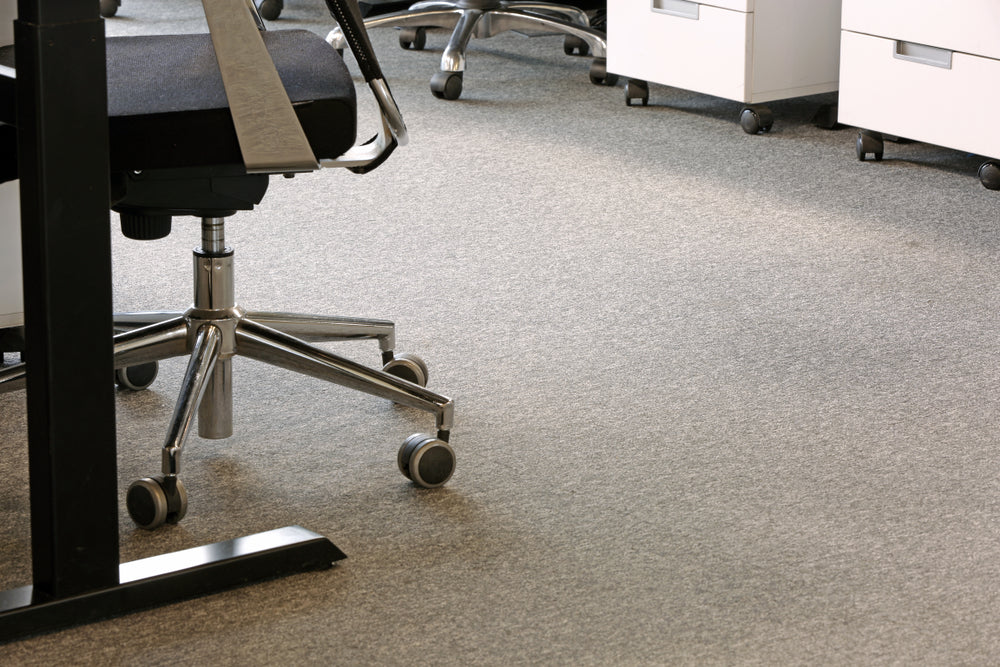While they're not often the first office design element chosen, rugs play an important role in many office spaces. Area rugs are not only vital for aesthetics, they also factor into sound dampening and warming of the space -- and choosing the right rug or rugs for your office is more meaningful than you might think.
At Urban 9-5, we're happy to offer a diverse selection of rugs as part of our overall office furniture catalog, helping introduce both color and vintage patterns into any office space. What are the most important elements to consider as you select one or more rugs for any office space? Here are several.
Rug Size
Rug size is important within the office for several reasons, including basic fit and aesthetic appeal. While small rugs can be great for foot traffic areas, having an appropriately sized rug in the right spot is vital to both comfort and convenience. For example, how many times have you tripped on a rug that was too small for a hallway or open office space? In other cases, even minor spills can become serious issues as the rug's weave becomes damaged, causing a trip hazard.
There are several ways to avoid awkward situations and damage to all rugs, regardless of their size. While some may worry that oversized rugs can be an eyesore, this is not always true -- in fact, they're often better suited for certain office spaces and functions. For example, a long hallway with an oversized rug can create the illusion of spaciousness and extra warmth, making it much easier to navigate in pairs or groups.
If needed, you may have to do some measuring to ensure that the rug you're considering will work, but in most cases this isn't necessary. In fact, picking out a rug may be as simple as walking into the room and seeing what looks right.
Rug Type
The type of rug you choose will also be important for your office space. Certain rugs may be perfect for one room, but not another -- it all depends on what you're trying to achieve in every area of your space.
In a traditional office setting, the majority of the floor should be covered by a plush rug that will improve sound quality and insulation, but also provide a more comfortable walking surface (some offices have carpet for this instead). In open spaces, it often makes sense to use smaller rugs or runners that are easily movable -- this can help with a number of issues in these creative office spaces, including sound dampening and overall decor.
For your reception area, the right rug will also make an impression. For example, using a well-made wool rug can provide a much more sophisticated look. This is also an area where bigger isn't always better -- while oversized rugs may be common in this area, it's not necessary to cover the entire reception area with one large rug or carpet.
Rug Texture
Especially for offices where there's lots of regular foot traffic, rug texture is an element that can be easy to overlook. However, it makes a big difference in how much of the rug is actually utilized -- and there are some important issues to consider here. For example, rugs with thick wool fibers will stand up better to heavy traffic, which means they're less likely to be damaged by everyday use or wear-and-tear.
While a few rugs with coarse fibers may look great in some office spaces, they're not ideal for use throughout the entire area. It can be helpful to select several different types of rugs that are appropriate for different areas or purposes -- like carpeting and runners for open office space versus large plush rugs for the reception area.
Rug Underlayment and Rug Padding
In many cases, rugs will need some underlayment and padding to keep them in place and protect the floor underneath. For example, rugs laid over hardwood floors will benefit from a high-quality rug pad that helps prevent damage while also providing better overall comfort.
In other cases, the type of underlayment used will depend on where and how you're using it. For example, rugs that are exposed to high levels of sunlight should have extra protection from ultraviolet rays. In addition to basic rug care, it's also important to consider what types of traffic your office area gets -- does anyone with allergies come in, or will the office space be used by people with weak ankles?
In many cases, this may mean using a heavy-duty rug pad that won't allow rugs to slip around. Smooth rugs are also crucial for preventing slips -- especially on smooth floors where there's no texture to grab onto.
Avoid Weaker Fabrics
While they may seem aesthetically pleasing, weaker fabrics like silk, bamboo and other artificial materials are not ideal for the foot traffic in many office spaces. This is especially important for open offices and other locations where a lot of foot traffic occurs -- weaker fabrics are more likely to fold over, creating trip hazards that can be unsafe or disruptive in any space.
Instead, opting for stronger materials (like synthetic silk) will help prevent accidental slips as well as the potential damage caused by heavy traffic. It's also crucial to take into account the frequency of your office area's foot traffic when making a decision on which types of materials to use -- if you have areas that seldom receive any type of traffic, it may make sense to use rugs with weaker materials for style purposes.
For more on selecting the ideal rug for any space in your office, or to learn about any of our industrial office furniture options, speak to the staff at Urban 9-5 today.

